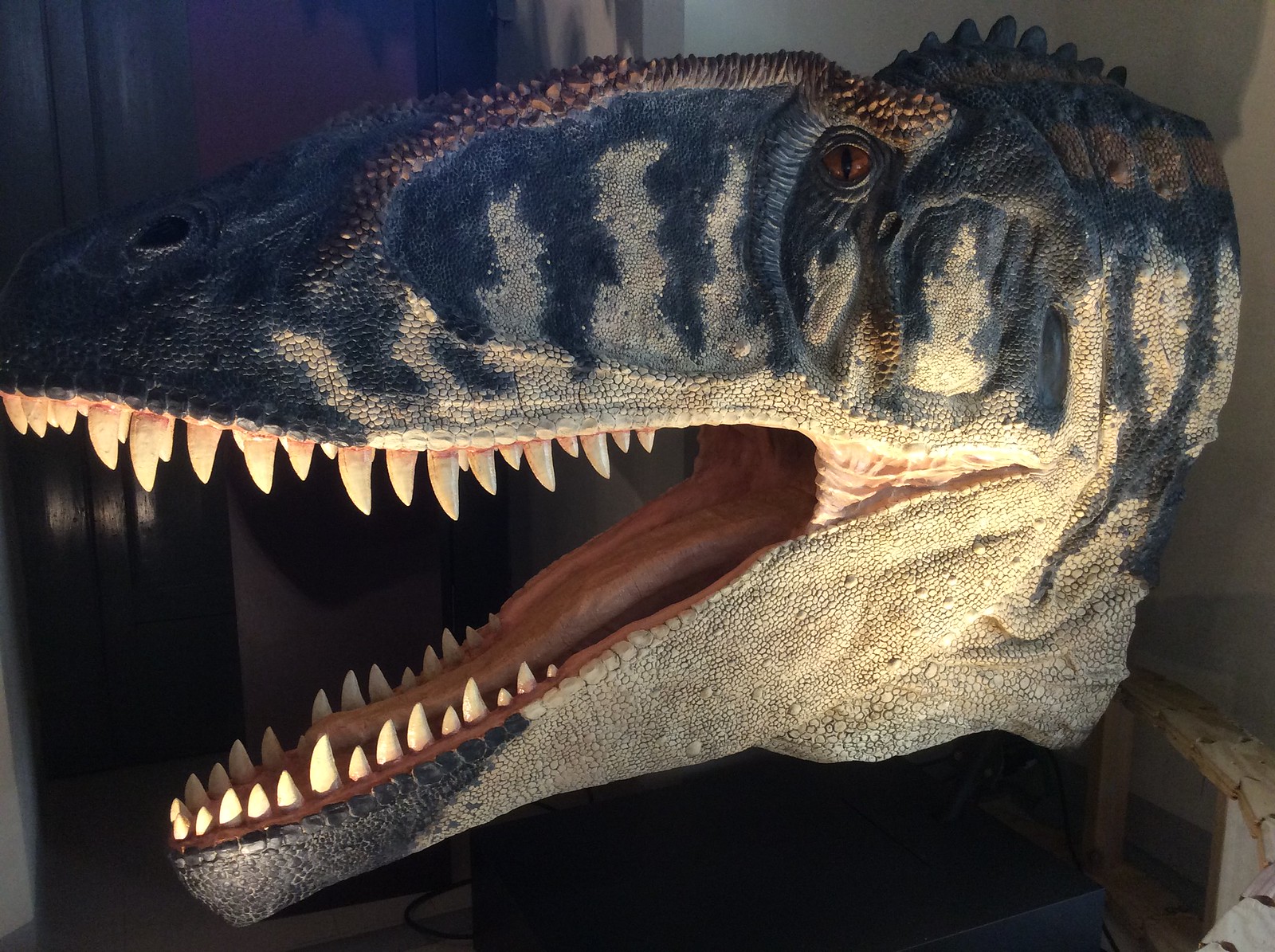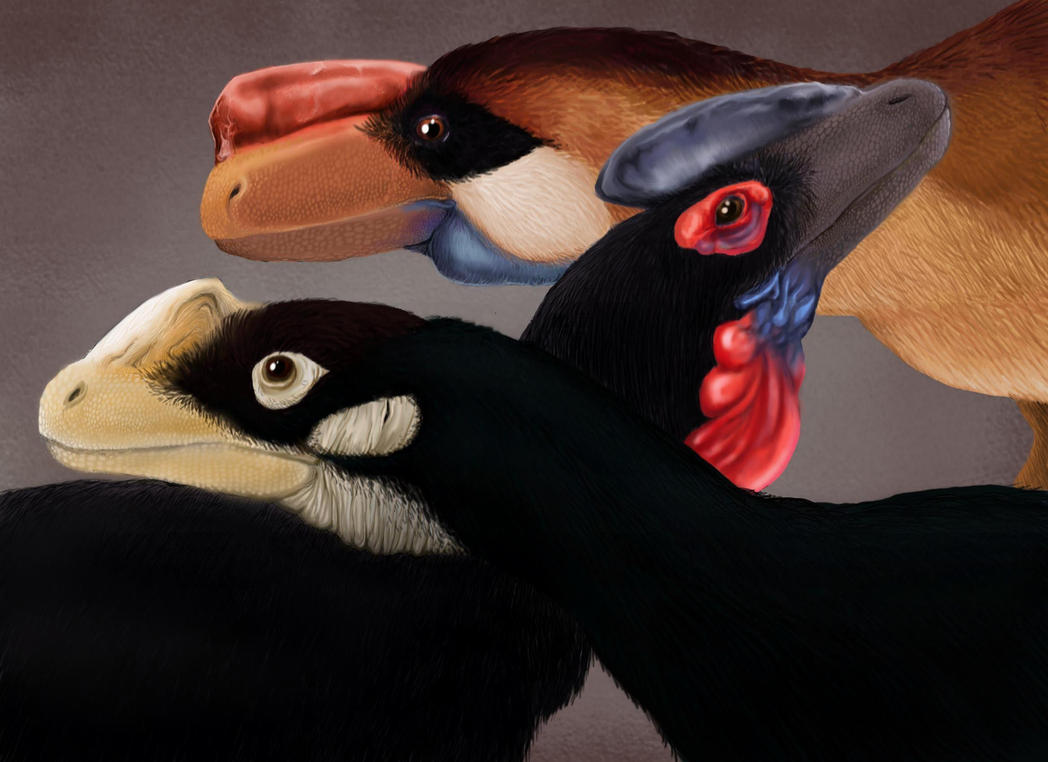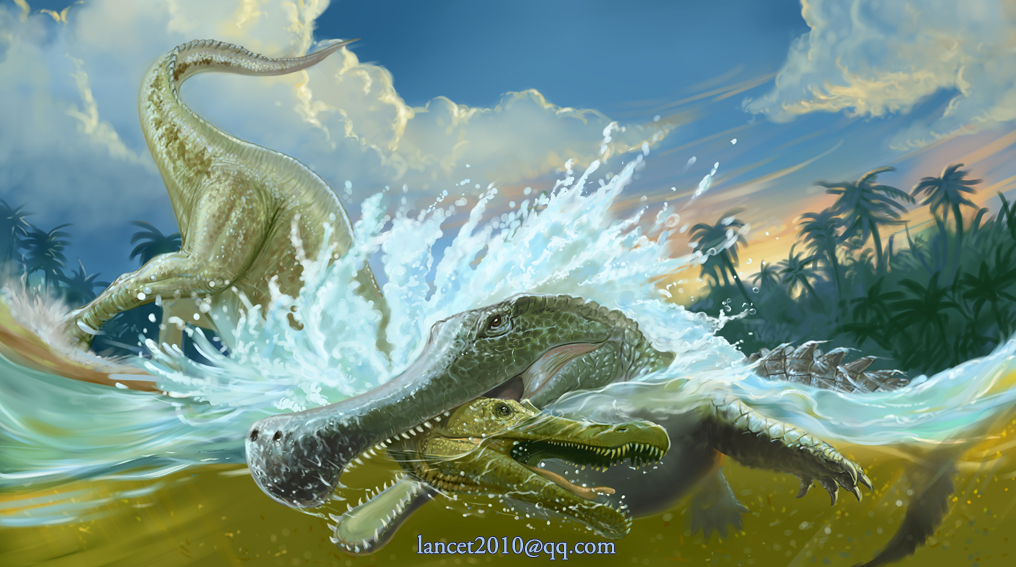Post by Infinity Blade on Feb 22, 2014 18:35:38 GMT 5
Spinosaurus aegyptiacus
Spinosaurus (meaning "spine lizard") is a genus of theropod dinosaur which lived in what is now North Africa, from the lower Albian to lower Cenomanian stages of the Cretaceous period, about 112 to 97 million years ago. This genus was first known from Egyptian remains discovered in 1912 and described by German paleontologist Ernst Stromer in 1915. The original remains were destroyed in World War II, but additional material has come to light in recent years. It is unclear whether one or two species are represented in the fossils reported in the scientific literature. The best known species is S. aegyptiacus from Egypt, although a potential second species S. maroccanus has been recovered from Morocco. Spinosaurus may be the largest of all known carnivorous dinosaurs, even larger than Tyrannosaurus and Giganotosaurus. Estimates published in 2005 and 2007 suggest that it was 12.6 to 18 metres (41 to 59 ft) in length and 7 to 20.9 tonnes (7.7 to 23.0 short tons) in weight. The skull of Spinosaurus was long and narrow like that of a modern crocodilian. Spinosaurus is known to have eaten fish; evidence suggests that it lived both on land and in water like a modern crocodilian. The distinctive spines of Spinosaurus, which were long extensions of the vertebrae, grew to at least 1.65 meters (5.4 ft) long and were likely to have had skin connecting them, forming a sail-like structure, although some authors have suggested that the spines were covered in fat and formed a hump. Multiple functions have been put forward for this structure, including thermoregulation and display.

Sarcosuchus imperator
Sarcosuchus (/?s?rk??su?k?s/; meaning "flesh crocodile"), is an extinct genus of crocodyliform and distant relative of the crocodile that lived 112 million years ago. It dates from the early Cretaceous Period of what is now Africa and South America and is one of the largest crocodile-like reptiles that ever lived. It was almost twice as long as the modern saltwater crocodile and weighed up to 8 tonnes. The first remains were discovered during several expeditions lead by the French paleontologist Albert-Félix de Lapparent, spanning from 1946 to 1959 in the Sahara Desert. These remains were fragments of the skull, vertebrae, teeth and scutes. In 1964, an almost complete skull was found in Niger by the French CEA, but it was not until 1997 and 2000 that most of its anatomy became known to science, when an expedition led by the American paleontologist Paul Sereno discovered 6 new specimens, including one with about half the skeleton intact and most of the spine.

Spinosaurus (meaning "spine lizard") is a genus of theropod dinosaur which lived in what is now North Africa, from the lower Albian to lower Cenomanian stages of the Cretaceous period, about 112 to 97 million years ago. This genus was first known from Egyptian remains discovered in 1912 and described by German paleontologist Ernst Stromer in 1915. The original remains were destroyed in World War II, but additional material has come to light in recent years. It is unclear whether one or two species are represented in the fossils reported in the scientific literature. The best known species is S. aegyptiacus from Egypt, although a potential second species S. maroccanus has been recovered from Morocco. Spinosaurus may be the largest of all known carnivorous dinosaurs, even larger than Tyrannosaurus and Giganotosaurus. Estimates published in 2005 and 2007 suggest that it was 12.6 to 18 metres (41 to 59 ft) in length and 7 to 20.9 tonnes (7.7 to 23.0 short tons) in weight. The skull of Spinosaurus was long and narrow like that of a modern crocodilian. Spinosaurus is known to have eaten fish; evidence suggests that it lived both on land and in water like a modern crocodilian. The distinctive spines of Spinosaurus, which were long extensions of the vertebrae, grew to at least 1.65 meters (5.4 ft) long and were likely to have had skin connecting them, forming a sail-like structure, although some authors have suggested that the spines were covered in fat and formed a hump. Multiple functions have been put forward for this structure, including thermoregulation and display.

Sarcosuchus imperator
Sarcosuchus (/?s?rk??su?k?s/; meaning "flesh crocodile"), is an extinct genus of crocodyliform and distant relative of the crocodile that lived 112 million years ago. It dates from the early Cretaceous Period of what is now Africa and South America and is one of the largest crocodile-like reptiles that ever lived. It was almost twice as long as the modern saltwater crocodile and weighed up to 8 tonnes. The first remains were discovered during several expeditions lead by the French paleontologist Albert-Félix de Lapparent, spanning from 1946 to 1959 in the Sahara Desert. These remains were fragments of the skull, vertebrae, teeth and scutes. In 1964, an almost complete skull was found in Niger by the French CEA, but it was not until 1997 and 2000 that most of its anatomy became known to science, when an expedition led by the American paleontologist Paul Sereno discovered 6 new specimens, including one with about half the skeleton intact and most of the spine.


















